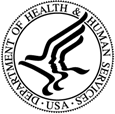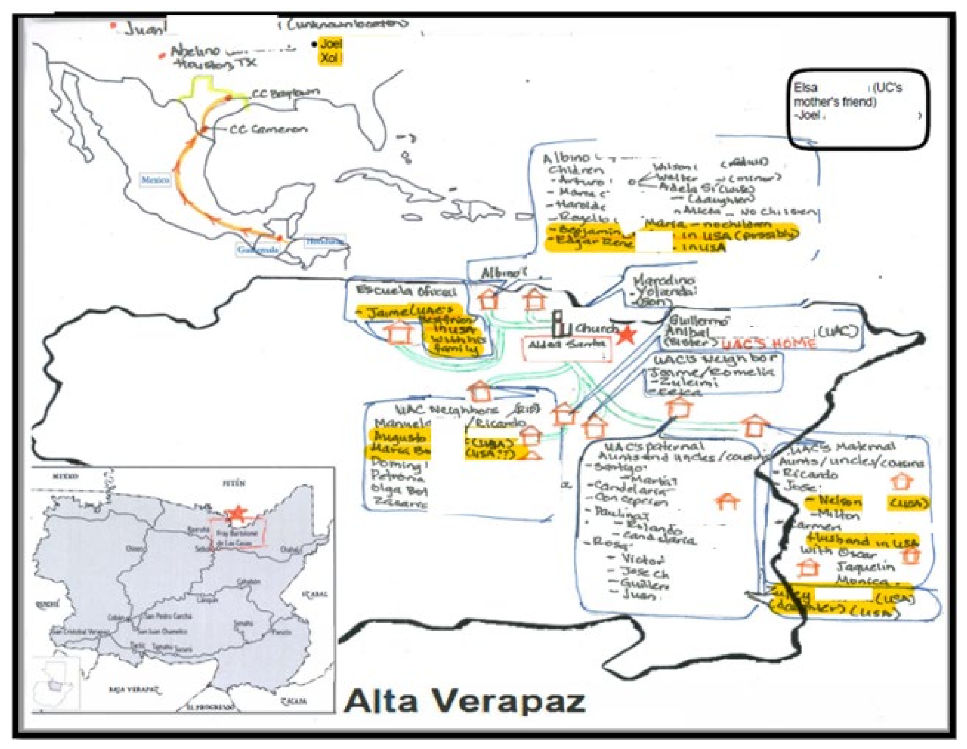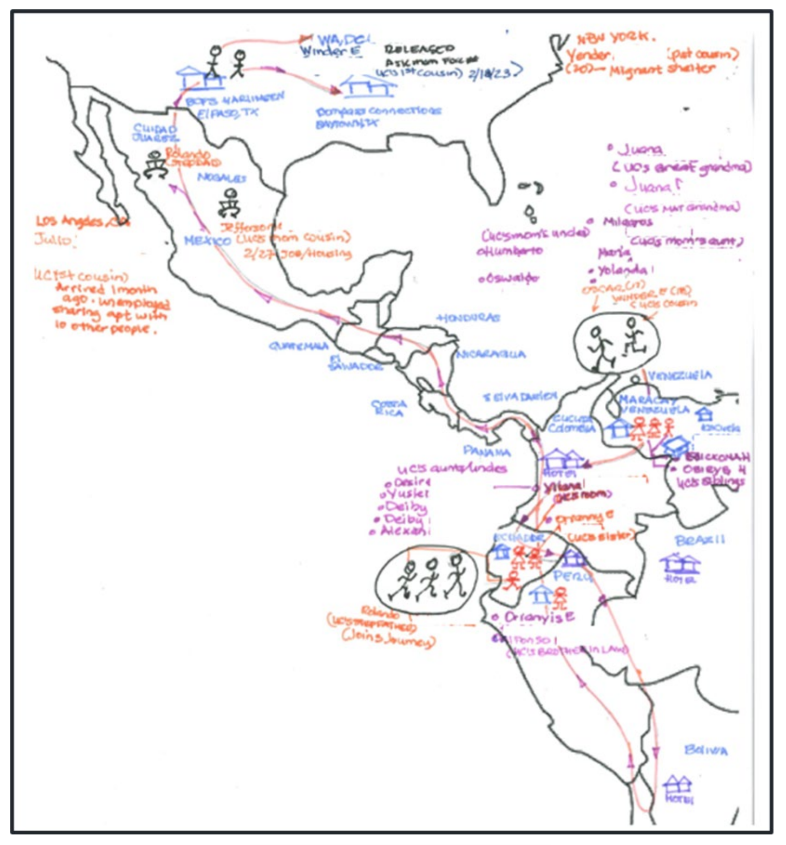Form TBD Family Finding and Mobility Mapping
Unaccompanied Alien Children Assessments for Children and Sponsors
Family Finding and Mobility Mapping (Form TBD-#) v.2.0 EO Remediated_2025.02.21 - CLEAN
Family Finding and Mobility Mapping (TBD) - Clinician
OMB:

OMB 0970-0XXX Valid Through MM/DD/YYYY
Administration for Children and Families
Office of Refugee Resettlement
Family Finding Mobility Mapping (Form TBD-#)
INTRODUCTION: Mobility Maps capture a child’s historical mental picture of their life story before and during migration in a visual format (see Appendix A for example maps), and document important relationships, physical locations, and context that may assist care providers to identify potential sponsors from extended family and kinship networks.
INSTRUCTIONS to Case Managers and Clinicians
Gather paper, markers, crayons, or colored pencils.
Select an informal setting for engaging with the child such as an outdoor courtyard or art room.
Explain the purpose of the mapping exercise considering the age and developmental stage of the child.
Allow the child to take the lead in responding to case manager prompts, noting some children may want to skip over negative memories. Support the child to complete the mapping exercise while prioritizing emotional safety and wellbeing.
Inform the child that you will be asking questions and taking notes as they create their map, the purpose of this is to ensure you understand what the child tells you during the mapping session. Ensure they understand and consent to this.
Use the guiding questions below to initiate and refocus, if needed, during the mapping process.
NOTE: The following questions are not a questionnaire and should not be read through as a list; strive to provide the child with individualized attention and guidance. Be present and attuned to the child during the process.
Creating the Mobility Map
Suggested Mobility Mapping Questions:
Thinking back as far as you can in your life, where was the first place you remember living.
What did it look like? Can you draw it for me?
How old were you when you lived there?
Who lived there with you? Can you draw them for me?
What were their names? How old were they?
Do you remember your neighbors? Can you draw their houses?
What were your neighbor’s names? Did you know them well?
Did your neighbors ever care for you when your parents were away or busy?
What school did you go to?
Did you have a favorite teacher at school? What was their name?
Can you draw the school and your teacher?
THE
PAPERWORK
REDUCTION
ACT
OF
1995
(Pub. L. 104-13)
STATEMENT
OF
PUBLIC
BURDEN: The
purpose
of this
information
collection is
to allow care providers to identify additional family and kin who
may assist in identifying potential sponsors through a guided,
age-appropriate visual mapping of a child’s life story,
context, familial and social relationships. Public
reporting burden for this collection of
information is estimated to
average 1.5 hours per response for child, clinician, and case
manager respondents, including the time for reviewing instructions,
gathering, and maintaining the data needed, and reviewing the
collection of information. This
is a mandatory collection of information (Homeland Security Act, 6
U.S.C. 279, and Trafficking Victims Protection Reauthorization Act,
8 U.S.C.
1232).
An
agency
may
not
conduct
or
sponsor,
and
a
person
is
not
required
to
respond
to,
a collection
of
information
subject
to
the
requirements
of
the
Paperwork
Reduction
Act of 1995, unless it displays
a currently valid OMB control number. If you have any comments on
this collection of information, please contact
[email protected].

Suggested Mobility Mapping Questions Continued:
Did you go to church? Can you draw the church?
What did you like to do for fun when you lived here?
Tell me about your friends at school/ church/ soccer (substitute other activities as appropriate).
Did any of your friends come to the U.S.? Where are they now?
Did you have a favorite coach?
Did anyone regularly visit your home? Did you go visit anyone?
Where did you live next? How old were you when you moved?
Who lived with you in this place? Draw them and the house. How old was each person who lived with you?
Who did you have good feelings about? Who do you think about?
Tell me some of your best memories and stories.
Who taught you new things? Who did you teach?
Did you ever hear anyone talk about people they knew were in the U.S.? Who?
Who coordinated family reunions or other celebrations?
What foods did they eat, and what traditions were celebrated? Who attended these celebrations?
Ask if the child liked or disliked certain places or people and ask them to explain why they feel this way.
For pregnant and parenting teens: who was the first person you talked to about being pregnant? Who did you seek guidance and support from? Who was most supportive after the baby was born.
NOTE: Encourage the child to share about places, people, interests, activities, and patterns. Acknowledge any losses, painful, and difficult memories the child shares. Mobility Maps may be created over one or more sessions, depending on the child’s needs.
Concluding a Mapping Session:
At the end of the session, and when the map is complete, ask the child to label their map with the following information:
Geographical: Using a different colored marker, ask the child to highlight the people they know or have heard are in the United States.
Safety: Ask the child to use another different color to highlight the people they do not feel safe with.
Validate: Review the map with the child and ensure mutual understanding of the information captured on the map. Provide the child the opportunity to add information or details if needed. Thank the child for their time and effort.
Document: make a color copy or scan of the Mobility Map and allow the child to keep their original drawing. Encourage the child to add to their map if they remember new details.
Mobility Maps and Concurrent Planning:
After the conclusion of a Mobility Mapping session, the Case Manager and/ or Clinician should complete the Permanency Planning Portfolio (Form TBD-#).
Appendix A: Sample Mobility Maps
Figure
1: “Alta Verapaz” Map
This is a sample mobility map created by an unaccompanied alien child. All last names have been redacted for confidentiality and protection of Personally Identifiable Information.
The author of this map is a 14-year-old from Guatemala whose length of care was 90 days when Mobility Mapping was initiated. The child had two failed sponsorships across two different programs and had no remaining identified potential sponsors as the parents were residing in their home country. This Mobility Map enabled the child to identify several extended family members, former neighbors and other trusted adult contacts which resulted in the child successfully reunifying with a sponsor. Names highlighted in yellow indicate individuals identified as living in the United States. The map was created over the course of multiple sessions with their case manager.
 Figure
2: “Venezuela” Map
Figure
2: “Venezuela” Map
This map was created by a 17-year-old child from Venezuela. The child experienced multiple migratory events before arriving in the United States. The ability to trace the child’s life story via mapping his familial and social networks in several countries led to the discovery of multiple sponsorship options that were previously unknown to the child’s father who remained in their home country. Mapping identified several extended family members and contacts that the minor lived with in the years preceding their arrival in the United States, which expanded sponsorship options.
TBD-# | Version 1.0
MM/DD/YYYY
| File Type | application/vnd.openxmlformats-officedocument.wordprocessingml.document |
| Author | Gallagher, Emily (ACF) |
| File Modified | 0000-00-00 |
| File Created | 2025-05-29 |
© 2025 OMB.report | Privacy Policy